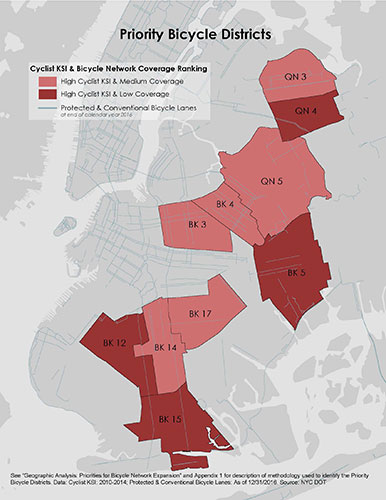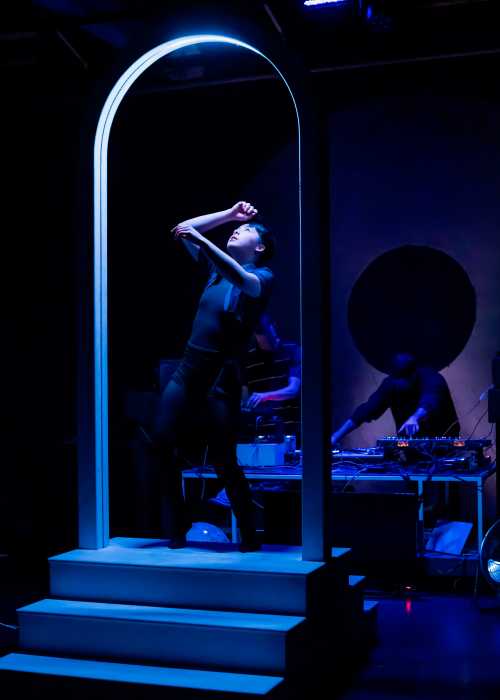
Priority Bicycle Districts/NYC DOT
Aug. 4, 2017 By Nathaly Pesantez
The neighborhoods of Elmhurst, Corona, and Jackson Heights are likely to see new or added bike lanes in the future, as the city will begin to study these areas in an effort to make bike riding safer for the high number of riders in the area.
A study by the Department of Transportation and partners including the NYPD and the Department of Health and Mental Hygiene found that community boards 3, 4, and 5 in Queens are sparsely numbered in bicycle lanes, yet rank highly in the number of cyclists who are killed or severely injured in the area.
The three community boards in Queens are part of 10 “priority districts” the city is focusing on that make up 23 percent of all cyclists killed or injured in the city, but only have 14 percent of the city’s bike lanes, according to the study.
Community board 3, covering East Elmhurst, Jackson Heights, and North Corona, has 11.6 miles of bicycle lanes in the 109.5 street miles of CB3, making up 11 percent of the bicycle network coverage for that area. Community board 4, which makes up Corona, Corona Heights, and Elmhurst, is the least covered of the district in Queens, with just 3 percent, or 2.9 miles of bicycle network coverage in the 82 street miles for the area.
CB3 and CB4 rank “high” in cyclist that were killed or severely injured since 2010-2014, with 45 severe injuries in CB3 and 39 in CB4. Two fatalities were recorded in each of the two community boards.
Goals for the priority districts include creating or enhancing 75 bicycle lane miles by 2022, and the DOT will receive input from local communities to do so, the city said.
“With detailed and specific plans to make further improvements that protect cyclists in neighborhoods around the City, this study will help us keep that momentum going for years to come,” Mayor Bill de Blasio said in a statement.
The city will also look into the feasibility of expanding Citi Bike into priority districts.
The bicycle network of the city has grown over four times its size since 1996, going from less than 250 lane miles to over 1,100 lane miles in 2016, the study revealed.
To access the report, click here.
4 Comments







Stfu albert.
This is so wrong. Stop with bikes.
Bikes don’t pollute. They are quiet. They don’t cause traffic jams. They don’t require oil to be imported from other parts of the world. They provide exercise. Yes they can run you down like a car but chances are the same idiots that think that they can speed in a car or run a red light or ignore pedestrians will be far more lethal in a car than on a bike. Furthermore, they represent a cheap partial solution to addressing Global Warming – they don’t require government action – just let people pedal to work. No one has the right to ignore traffic signs – I’m a runner and even I stop for red lights. Drivers don’t have a God given right to monopolize the road. I promise that I will share the road with you. Please yield the same courtesy to me and to others.
Great! Bikes screwed up sunnyside and Woodside now us.